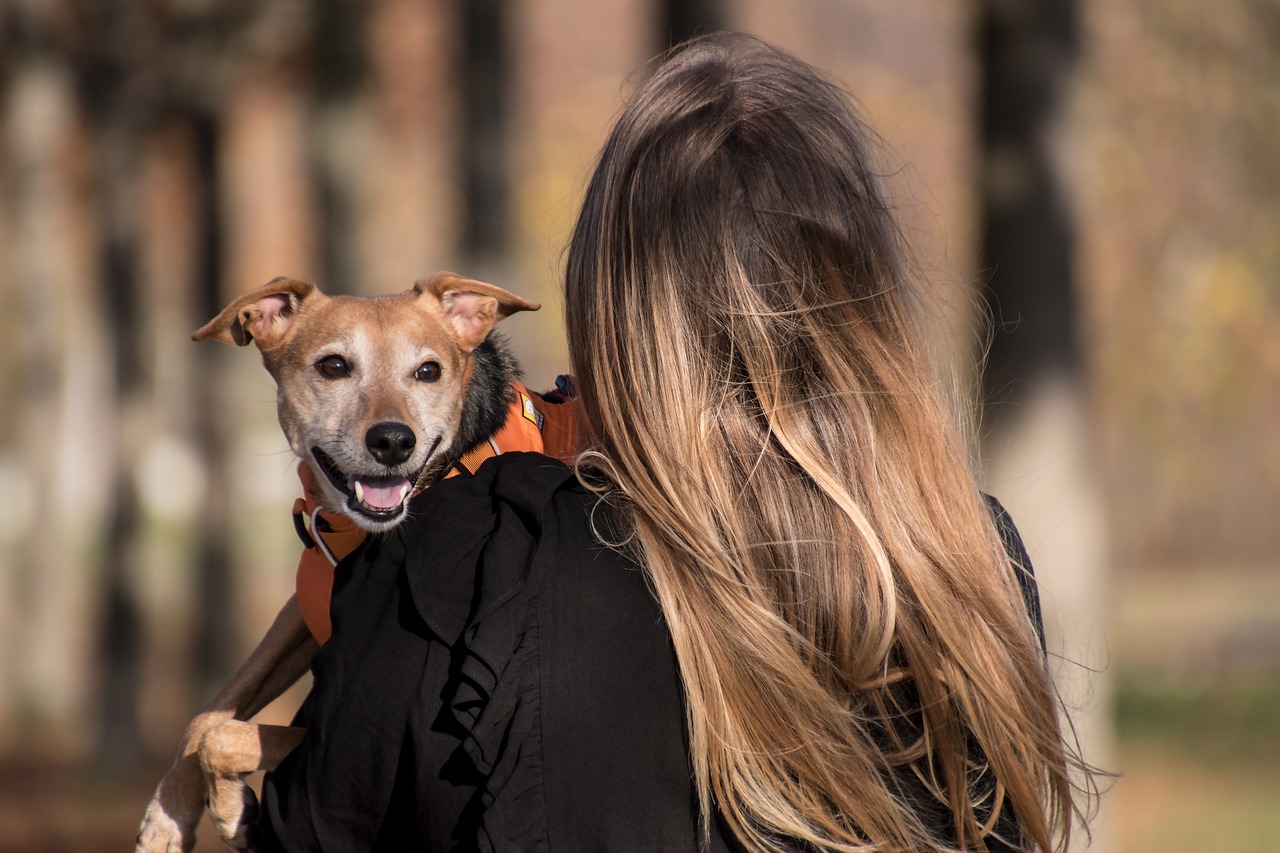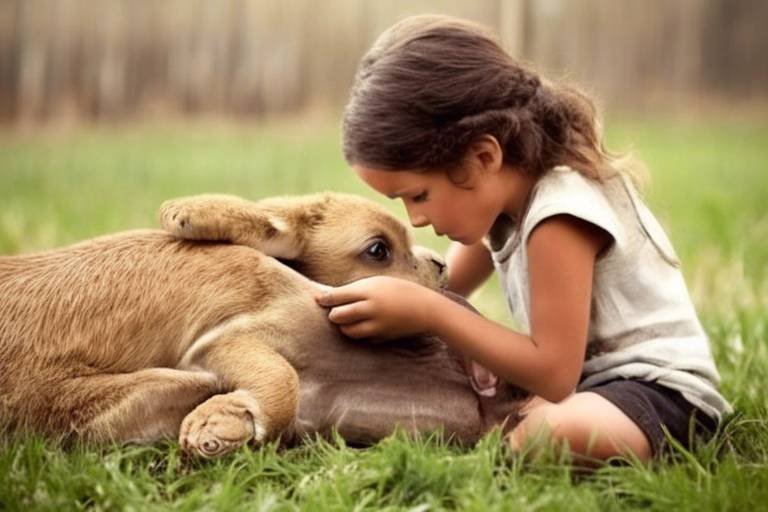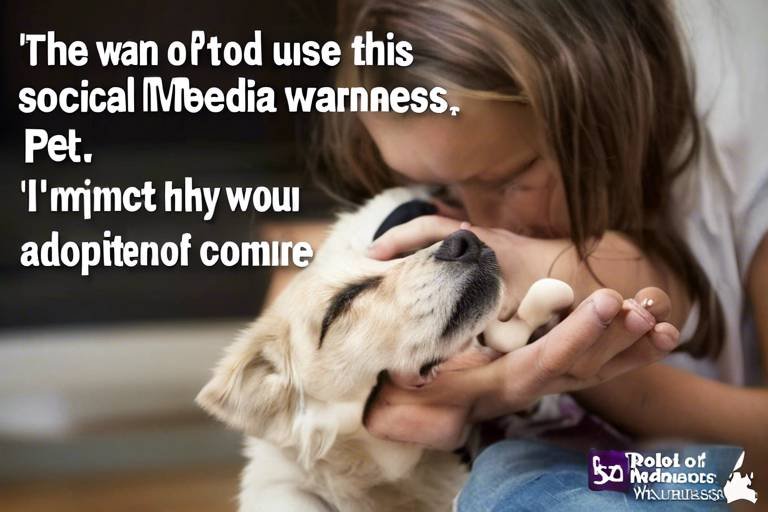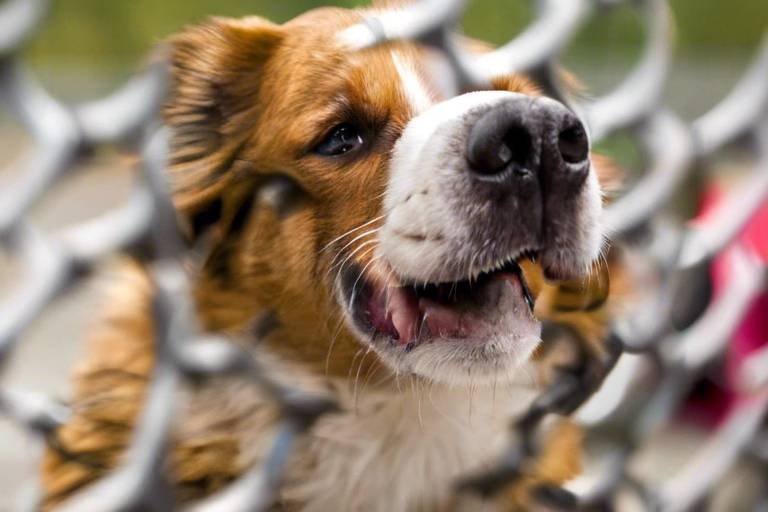Understanding Pet Adoption Fees - What Do They Cover?
When it comes to welcoming a furry friend into your home, one of the first things you might encounter is the adoption fee. But what does this fee actually cover? It’s more than just a price tag; it’s a ticket to responsible pet ownership and a way to support animal welfare. Adoption fees can vary widely, but they typically encompass a range of crucial services and care that ensure both the health of the pet and the peace of mind for the new owner.
Imagine adopting a pet without knowing its health history or whether it has received necessary vaccinations. The adoption fee helps to alleviate those worries. It plays a vital role in funding the essential services provided by shelters, including medical care, vaccinations, and even behavioral assessments. In essence, these fees are an investment—not just in the life of the pet you’re adopting, but also in the broader mission of animal welfare organizations that strive to protect vulnerable animals.
So, what exactly are you paying for when you adopt a pet? Let’s break it down. Typically, adoption fees cover:
- Vaccinations - Ensuring your new pet is up to date on their shots.
- Spaying/Neutering - Preventing unwanted litters and promoting better health.
- Microchipping - Helping to reunite lost pets with their owners.
- Health Checks - Assessing the overall well-being of the pet.
These components not only ensure that your new companion is healthy but also significantly contribute to the overall welfare of animals in shelters. By paying the adoption fee, you’re helping to fund the ongoing care of other animals in need, making a difference in countless lives.
In conclusion, understanding pet adoption fees is essential for anyone looking to adopt. These fees are not just costs; they are a crucial part of the ecosystem that supports animal welfare and responsible pet ownership. By investing in an adoption fee, you’re not only bringing a new friend into your life but also supporting a greater cause. So, let’s dive deeper into what these fees entail and how they benefit both pets and their new families.

The Importance of Adoption Fees
Adoption fees are not just a mere formality; they are a critical component of responsible pet ownership and animal welfare. When you decide to adopt a furry friend, you might wonder why there’s a fee associated with it. Isn’t giving a loving home enough? Well, the truth is, these fees serve several important purposes that go beyond the initial transaction.
First and foremost, adoption fees help to support animal shelters and rescue organizations. These facilities work tirelessly to provide safe havens for animals in need, and the costs associated with their care can be substantial. From food to medical care, the expenses add up quickly. The funds collected from adoption fees directly contribute to:
- Veterinary care, including vaccinations and spaying/neutering
- Daily care and feeding of the animals
- Facility maintenance and improvements
- Rescue operations to save more animals in distress
Moreover, these fees play a significant role in ensuring the overall health and safety of the pets being adopted. Each fee typically includes essential veterinary services that are crucial for a pet’s well-being. By covering these costs upfront, shelters can ensure that the animals are healthy and ready to transition into their new homes. This not only protects the pets but also safeguards the new owners from potential health issues down the line.
Another important aspect of adoption fees is their role in promoting responsibility among pet owners. When individuals pay a fee to adopt, they are more likely to take their commitment seriously. It’s almost like a symbolic gesture that reinforces the idea that owning a pet is a serious responsibility that requires time, effort, and resources. This mindset can lead to better care and a more loving environment for the adopted pet.
In summary, adoption fees are essential for several reasons. They support shelters, ensure the well-being of pets, and promote responsible pet ownership. By understanding the importance of these fees, potential adopters can feel more confident in their decision to bring a new companion into their lives. After all, adopting a pet means not just providing a home, but also contributing to a larger mission of animal welfare.

Breakdown of Typical Adoption Fees
When you decide to adopt a pet, one of the first things you’ll encounter is the adoption fee. This fee can vary widely based on the organization, location, and type of pet you’re looking to adopt. Understanding what these fees cover can help you appreciate their value and significance. Typically, adoption fees include a variety of essential services that contribute to the health and well-being of your new furry friend. So, what exactly are you paying for when you adopt?
Most adoption fees cover several critical components, each playing a vital role in ensuring your new pet is ready to join your family. Here’s a breakdown of the common elements included in these fees:
| Component | Description |
|---|---|
| Vaccinations | Pets are often vaccinated against common diseases, ensuring their health and reducing the risk of spreading infections. |
| Spaying/Neutering | This procedure helps control the pet population and can prevent certain health issues in pets. |
| Microchipping | A microchip is implanted for identification purposes, significantly increasing the chances of reuniting lost pets with their owners. |
| Health Checks | Many shelters perform initial health assessments to identify any immediate health concerns. |
These components are crucial not only for the pet’s well-being but also for the safety of your home. For instance, vaccinations protect your pet from diseases that could be life-threatening. Imagine bringing a puppy home, only to find out later that it was unvaccinated and susceptible to parvovirus! By including vaccinations in the adoption fee, shelters ensure that you’re bringing home a healthy pet, which ultimately saves you from unexpected veterinary bills down the line.
Spaying and neutering are equally important. These procedures not only help control the pet population but also come with health benefits. Unspayed females are at risk for conditions like pyometra, a serious infection of the uterus, while unneutered males can develop testicular cancer. By covering these costs in the adoption fee, shelters take a proactive approach to pet health, which is a win-win for everyone involved.
Additionally, microchipping is a small yet powerful tool in pet ownership. If your pet ever goes missing, a microchip can be the difference between a happy reunion and a heartbreaking loss. This tiny chip, implanted under the skin, contains your contact information, making it easy for shelters or vets to return your pet to you. The peace of mind that comes with knowing your pet can be identified is invaluable.
In summary, the adoption fee is not just a price tag; it’s an investment in your pet’s health and your peace of mind. By understanding the breakdown of these fees, you can appreciate the comprehensive care that goes into preparing your new companion for life in your home. Remember, adopting a pet is a commitment that goes beyond the initial fee; it’s about providing a loving and safe environment for a creature that will become a cherished part of your family.
Vaccinations and Health Checks
When you adopt a pet, one of the first things you might notice on the adoption fee breakdown is the inclusion of . But why are these elements so crucial? Imagine bringing a new furry friend into your home, only to discover they have underlying health issues. That’s a nightmare scenario for any pet owner! Vaccinations are like a shield, protecting your pet from various diseases that could not only affect their health but also pose risks to other animals and even humans.
Typically, when you pay your adoption fee, it covers a series of vaccinations that are essential for your pet's well-being. These vaccinations may include:
- Distemper
- Parvovirus
- Rabies
- Feline Leukemia (for cats)
Each of these vaccinations plays a critical role in ensuring that your pet remains healthy and safe. For instance, the rabies vaccine is not only a legal requirement in many areas but also a life-saving measure for your pet and those they come into contact with. Additionally, health checks performed at the time of adoption help identify any immediate health concerns, ensuring that your new companion starts their life with you on the right paw.
Moreover, shelters often conduct thorough health screenings before placing pets for adoption. This includes checking for common parasites, assessing weight, and evaluating overall health. By catching potential issues early, shelters can provide necessary treatments, which may be covered by the adoption fee. This proactive approach not only enhances the pet's quality of life but also reduces future veterinary costs for you as a pet owner.
In summary, the inclusion of vaccinations and health checks in adoption fees is not just a formality; it’s a proactive investment in your pet’s future. By ensuring your new friend is vaccinated and healthy, you’re setting the stage for a long, happy, and healthy life together. So, the next time you see that adoption fee, remember that it’s not just about the cost—it’s about the care and support that comes with bringing a new pet into your home.
- What vaccinations are typically included in adoption fees? Most shelters include core vaccinations such as distemper, parvovirus, and rabies.
- Are health checks done before adoption? Yes, shelters usually perform health checks to identify any immediate health concerns.
- Why are vaccinations important? Vaccinations protect pets from serious diseases and help prevent the spread of infections.
Spaying and Neutering Costs
When considering pet adoption, one of the crucial aspects to understand is the inclusion of in the adoption fees. These procedures are not just a formality; they play a vital role in responsible pet ownership and community welfare. By spaying or neutering your pet, you help control the overpopulation of animals, which is an ongoing issue in many communities. Imagine a world where every pet has a loving home—this is the goal that spaying and neutering help achieve.
The costs associated with these procedures can vary widely, depending on several factors, such as the animal's age, size, and the specific veterinary clinic or shelter performing the surgery. Typically, the adoption fee will cover the cost of the procedure, which can range from $50 to $200. This fee often includes not just the surgery itself but also pre-operative exams, anesthesia, and post-operative care, which are essential for ensuring your pet's health and safety.
Moreover, many shelters and rescue organizations provide these services at a significantly reduced rate, as they understand the financial burden that can come with pet ownership. By bundling these costs into the adoption fee, they make it more manageable for new pet owners, allowing them to focus on what truly matters—building a loving and lasting relationship with their new furry friend.
It's also important to note that spaying and neutering can lead to various health benefits for your pet. For instance, spaying female pets can reduce the risk of certain cancers and eliminate the chances of unwanted litters, while neutering males can prevent behaviors such as marking territory and aggression. These health advantages are just another reason why these procedures are essential and should not be viewed as an unnecessary expense.
In summary, while the upfront costs of spaying and neutering may seem daunting, they are an investment in your pet's health and the well-being of the community. By adopting a pet and ensuring they are spayed or neutered, you are taking a significant step towards responsible pet ownership and contributing to the solution of pet overpopulation.
- What is the difference between spaying and neutering? Spaying refers to the surgical procedure performed on female animals to remove their ovaries and uterus, while neutering is the equivalent procedure for male animals, which involves the removal of the testicles.
- At what age should I spay or neuter my pet? Most veterinarians recommend spaying or neutering pets between six months and one year of age, but it can vary based on the pet's health and breed.
- Will my pet's behavior change after being spayed or neutered? Yes, many pets exhibit calmer behavior after the procedure, as it can reduce aggressive tendencies and roaming instincts.
- Are there any risks associated with spaying or neutering? As with any surgical procedure, there are some risks involved, but they are generally minimal and outweighed by the benefits.

Additional Services Included in Adoption Fees
When you think about pet adoption, the first thing that often comes to mind is the adoption fee itself. However, what many people overlook are the additional services that these fees encompass. It's not just about bringing a furry friend home; it's about ensuring that both the pet and the owner are set up for success. These services can be incredibly beneficial, providing a solid foundation for a happy and healthy relationship between you and your new pet.
One of the most significant aspects of the adoption fee is that it often includes training programs. Imagine bringing a puppy into your home without any guidance; it can be a bit like trying to navigate a maze blindfolded! Training is essential, not just for obedience, but also for helping your pet adjust to their new environment. Many shelters and rescue organizations offer training sessions that help teach basic commands, socialization skills, and even behavioral correction. This investment in training pays off tremendously, as it leads to a more harmonious household and a well-adjusted pet.
In addition to training, many adoption fees cover behavioral assessments. These assessments are crucial for understanding your pet's personality and temperament. Knowing whether your new companion is shy, energetic, or a bit mischievous can help you tailor your approach to their care. It’s like having a personalized roadmap that guides you on how to best support your pet's unique needs. This can prevent potential issues down the line, ensuring a smoother transition into your home.
Moreover, the adoption fee often includes post-adoption support. This is a game-changer for new pet owners! Many organizations provide resources such as access to veterinary care, behavioral advice, and even community support groups. Think of it as having a safety net; you’re not alone in this journey. If you encounter challenges, whether it be training issues or health concerns, you have a network of support to lean on. This ongoing assistance is invaluable, especially for first-time pet owners who may feel overwhelmed.
Lastly, let’s not forget about the importance of community resources that adoption fees help fund. Many shelters organize events, workshops, and educational programs aimed at promoting responsible pet ownership. By participating in these activities, you not only enhance your own knowledge but also contribute to a culture of responsible pet care within your community. It's a win-win situation!
In summary, while the adoption fee might seem like just another expense, it encompasses a wealth of services designed to ensure that both you and your new pet thrive together. From training programs to ongoing support, these additional services are essential for fostering a successful and fulfilling pet ownership experience.
- What is typically included in the adoption fee? Adoption fees usually cover vaccinations, spaying/neutering, microchipping, and sometimes training and behavioral assessments.
- Can I get financial assistance for adoption fees? Yes, many organizations offer financial assistance or waivers to help make adoption more accessible.
- Are there ongoing resources after adoption? Absolutely! Many shelters provide post-adoption support, including access to training and behavioral resources.
- Do all shelters offer the same services? No, services can vary significantly between organizations. It’s important to inquire about what specific services are included in the adoption fee.
Training and Socialization Programs
When you adopt a pet, you’re not just bringing home a furry friend; you’re also embarking on a journey that requires commitment, patience, and love. One of the most crucial aspects of this journey is ensuring your new companion is well-trained and socially adept. Many adoption fees include , which are designed to help pets adjust to their new environments and become well-behaved members of the family.
Imagine bringing home a puppy or kitten who has never been exposed to the sounds of a bustling household. Without proper training and socialization, they might feel overwhelmed or anxious, leading to behavioral issues down the line. Training programs often focus on basic commands, potty training, and good manners, which can significantly ease the transition for both the pet and the owner. These programs are not just about teaching tricks; they are about building a strong bond and understanding between you and your pet.
Socialization is equally important. It involves exposing your pet to various environments, people, and other animals, helping them to feel comfortable and confident in different situations. A well-socialized pet is less likely to exhibit fear-based behaviors, such as aggression or excessive barking. Many shelters and rescue organizations offer structured socialization sessions as part of their adoption package, allowing your new pet to interact with other animals and people in a safe and controlled setting.
Here’s a quick overview of what you might expect from these programs:
| Program Type | Description | Benefits |
|---|---|---|
| Basic Obedience Training | Focuses on essential commands like sit, stay, and come. | Improves communication and strengthens the bond between pet and owner. |
| Socialization Classes | Provides exposure to different environments, sounds, and other pets. | Helps reduce anxiety and fear in new situations. |
| Behavioral Assessments | Evaluates your pet's behavior to tailor training approaches. | Identifies specific needs and helps address potential issues early. |
Incorporating training and socialization into your pet's routine can lead to a happier and more harmonious household. It’s not just about teaching your pet to behave; it’s about fostering a relationship built on trust and understanding. Plus, many shelters offer ongoing support and resources, ensuring that you have the tools you need to succeed as a pet owner. So, when you consider the adoption fee, remember that it often covers not just the initial care but also the foundation for a well-adjusted and happy pet.
- What types of training programs are typically included in adoption fees? Most programs include basic obedience training, socialization classes, and behavioral assessments.
- How can I continue my pet's training after adoption? Many shelters provide resources and recommendations for local training classes and ongoing support to help you continue your pet's education.
- Are training programs suitable for all ages of pets? Yes! Training and socialization are beneficial for pets of all ages, from puppies to senior dogs.
Post-Adoption Support and Resources
When you adopt a pet, the journey doesn’t just stop at bringing them home. In fact, it’s just the beginning! Post-adoption support is a vital component of the adoption process that many new pet owners might overlook. This support often includes various resources aimed at ensuring a smooth transition for both the pet and the owner. After all, adopting a pet is like adding a new family member, and just like any family member, they need a little extra help to settle in.
Many animal shelters and rescue organizations understand that the first few weeks can be challenging. They offer a range of resources, which may include:
- Training Classes: These classes can help you teach your new pet basic commands and good behavior. They are often included in the adoption fee, making it easier for new owners to access professional guidance.
- Behavioral Assessments: Some organizations provide assessments to help identify any behavioral issues your pet may have. This can be crucial in addressing problems early on and ensuring a harmonious household.
- Resource Guides: Many shelters offer comprehensive guides that cover everything from feeding and grooming to health care and exercise needs, helping you navigate the new responsibilities of pet ownership.
Additionally, many organizations have established hotlines or support groups where pet owners can ask questions or share experiences. This community support can be invaluable, especially for first-time pet owners who may feel overwhelmed. It’s like having a built-in support network that understands the ups and downs of pet parenting.
Moreover, some shelters even offer follow-up visits or check-ins to see how you and your new pet are adjusting. This kind of ongoing support is crucial because it not only helps you feel more confident in your new role but also ensures that the pet is thriving in its new environment. Remember, the goal is not just to place pets in homes but to create lasting, loving relationships.
In conclusion, the post-adoption support and resources provided by shelters and rescue organizations play a significant role in helping new pet owners. They ensure that you are not left to navigate the challenges of pet ownership alone but are equipped with the tools and knowledge needed for a successful journey together. So, when you adopt, be sure to take advantage of these valuable resources—they're there to help you and your furry friend live happily ever after!
Here are some commonly asked questions regarding post-adoption support:
- What types of training classes are available? Many shelters offer basic obedience training, socialization classes, and even specialty classes for specific breeds or issues.
- How can I access post-adoption support? Most shelters provide information on their websites or during the adoption process. Don’t hesitate to ask your shelter about available resources.
- Is there a cost for post-adoption support? Many resources are included in your adoption fee, but some specialized training may have additional costs.
- What if I have behavioral concerns after adoption? Reach out to your shelter or a local veterinarian for guidance. Many shelters have resources to help address behavioral issues.

Comparing Adoption Fees Across Organizations
When it comes to pet adoption, one of the first things potential pet parents notice is the variation in adoption fees across different organizations. You might be wondering, "Why do these fees differ so much?" Well, several factors contribute to the pricing structure of adoption fees, and understanding these can help you make an informed decision when adopting a furry friend.
First off, it's essential to recognize that not all shelters and rescue groups operate under the same financial constraints. For instance, larger organizations often have more resources and can subsidize adoption fees, making it more affordable for potential adopters. Conversely, smaller, local rescues may rely heavily on adoption fees to fund their operations, leading to higher costs. This disparity can sometimes be likened to shopping at a big-box store versus a quaint local boutique; the former may offer lower prices due to volume, while the latter may charge more to cover its unique offerings.
Additionally, the geographical location plays a significant role. In urban areas, where the cost of living is typically higher, adoption fees may reflect those increased expenses. On the other hand, rural shelters might have lower fees simply due to lower operational costs. To give you a clearer picture, consider the following table that outlines typical adoption fees across various types of organizations:
| Organization Type | Typical Adoption Fee | Included Services |
|---|---|---|
| Municipal Shelters | $50 - $150 | Vaccinations, Spay/Neuter |
| Non-Profit Rescues | $75 - $250 | Vaccinations, Spay/Neuter, Microchip |
| Breed-Specific Rescues | $100 - $300 | Vaccinations, Spay/Neuter, Training |
| Private Shelters | $150 - $500 | Vaccinations, Spay/Neuter, Microchip, Training |
As you can see from the table, adoption fees can vary widely. But it’s not just about the price tag; it’s also about what you’re getting in return. Many organizations include essential services like vaccinations, spaying/neutering, and even microchipping, which can save you a significant amount of money in the long run. When you think about it, these fees are not just an expense; they’re an investment in your pet's health and well-being.
Moreover, some organizations may offer additional perks, such as training classes or post-adoption support, which can greatly enhance your pet ownership experience. It's always a good idea to inquire about what services are included in the adoption fee, as this can provide a clearer picture of the overall value. Remember, adopting a pet is not just a one-time cost; it’s a long-term commitment that comes with ongoing responsibilities.
In conclusion, while comparing adoption fees across organizations may seem daunting at first, understanding the underlying factors can help you make an informed choice. Always consider what services are included, the organization’s mission, and how your fee will contribute to the welfare of animals in need. After all, adopting a pet is about finding the right match for both you and your new furry family member.
- What is the average cost of adopting a pet? The average cost can range from $50 to $500, depending on the organization and services included.
- Do adoption fees cover all medical expenses? Typically, yes. Most adoption fees include vaccinations, spaying/neutering, and sometimes microchipping.
- Are there financial assistance programs available? Many organizations offer financial assistance or waivers to help make adoption more accessible.
- Can I negotiate the adoption fee? While it’s not common, some organizations may be open to discussion, especially if you can demonstrate financial need.

Financial Assistance and Waivers
Adopting a pet is a noble decision, but it can also come with a financial burden that not everyone is prepared for. Fortunately, many animal shelters and rescue organizations understand this and offer financial assistance programs and waivers to help ease the burden of adoption fees. These initiatives are designed to ensure that cost is not a barrier to providing a loving home for an animal in need. By making adoption more accessible, these programs play a crucial role in promoting animal welfare and reducing the number of pets in shelters.
Many organizations provide a variety of options for financial assistance, which can include:
- Sliding Scale Fees: Some shelters adjust the adoption fee based on the adopter's income, making it more affordable for low-income families.
- Promotional Discounts: During special events or awareness campaigns, shelters may offer reduced fees or even waive them entirely to encourage adoption.
- Payment Plans: Certain organizations allow potential adopters to pay the adoption fee in installments, making it easier to manage financially.
Additionally, some shelters may partner with local businesses or charities to provide grants or sponsorships for potential adopters. This collaboration can significantly reduce or eliminate the adoption fee, allowing more people to welcome a furry friend into their lives. It's essential for prospective pet owners to inquire about any available financial aid when considering adoption, as these resources can vary widely between different organizations.
Moreover, many shelters also offer waivers for specific groups, such as veterans, senior citizens, or individuals with disabilities. These waivers aim to recognize and support those who have served the community or face unique challenges in their lives. By providing financial relief, shelters hope to encourage responsible pet ownership among these groups, ultimately leading to more successful adoptions and happier pets.
In conclusion, financial assistance and waivers play a vital role in making pet adoption accessible to all. They not only help alleviate the financial burden but also promote the idea that every animal deserves a loving home, regardless of the adopter's financial situation. So, if you're considering adopting a pet, don't hesitate to ask your local shelter about the financial support options available. You might be surprised at how many resources are out there to help you welcome a new furry family member!
Here are some common questions about financial assistance and waivers for pet adoption:
- What types of financial assistance are typically available? Many shelters offer sliding scale fees, promotional discounts, and payment plans.
- Do all shelters provide financial assistance? No, it varies by organization. Always check with your local shelter for their specific policies.
- Can I apply for assistance after I've chosen a pet? Yes, most shelters allow you to inquire about assistance at any point in the adoption process.

The Impact of Adoption Fees on Animal Welfare
Adoption fees may seem like just another hurdle in the journey of bringing a new furry friend into your life, but they play a crucial role in the broader landscape of animal welfare. When you pay an adoption fee, you're not just covering the costs associated with your new pet; you're actively contributing to the care and sustainability of animal shelters and rescue organizations. These fees help ensure that these facilities can continue to operate, providing safe havens for countless animals in need.
Think of adoption fees as a lifeline for shelters. They help cover essential expenses such as food, shelter, medical care, and even staff salaries. Without these funds, many shelters would struggle to maintain the level of care that every animal deserves. For example, a typical adoption fee might include:
| Expense Type | Average Cost |
|---|---|
| Food and Supplies | $100/month |
| Veterinary Care | $200 per animal |
| Staff Salaries | $3000/month |
These numbers illustrate just a fraction of the financial commitment involved in running a shelter. By paying an adoption fee, you're helping to ensure that these organizations can continue their vital work. Furthermore, the funds generated from adoption fees often go towards community outreach programs that educate the public about responsible pet ownership and the importance of spaying and neutering, which ultimately reduces the number of animals in need of homes.
Moreover, adoption fees also help foster a sense of responsibility among pet owners. When people invest financially in adopting a pet, they are more likely to take their commitment seriously. This can lead to better outcomes for the animals, as responsible owners are more inclined to provide proper care, training, and medical attention. In essence, adoption fees not only support shelters but also promote a culture of responsible pet ownership.
However, it's important to recognize that not everyone can afford these fees. This is where financial assistance programs come into play, allowing shelters to extend their reach and help more animals find loving homes. Many organizations offer sliding scale fees or even waivers for those in need, ensuring that financial constraints do not prevent someone from adopting a pet.
In conclusion, the impact of adoption fees on animal welfare is profound. They are more than just a cost; they are an investment in the future of countless animals and the organizations that care for them. By understanding the significance of these fees, potential pet owners can appreciate the broader implications of their decision to adopt, fostering a community that values and supports animal welfare.
- What do adoption fees typically cover? Adoption fees usually cover vaccinations, spaying/neutering, microchipping, and sometimes training and support services.
- Are there any financial assistance programs available? Yes, many shelters offer financial assistance or waivers for those who qualify, making adoption more accessible.
- How do adoption fees help shelters? Adoption fees provide essential funding for food, medical care, and operational costs, allowing shelters to continue their work.
Frequently Asked Questions
- What do adoption fees typically cover?
Adoption fees usually cover essential services such as vaccinations, spaying/neutering, microchipping, and sometimes even training and behavioral assessments. These fees ensure that the pet has received basic medical care and is ready for a loving home.
- Why are adoption fees important?
Adoption fees play a crucial role in supporting animal shelters and rescue organizations. They help cover the costs of caring for animals, including food, shelter, and medical care, ensuring that the facilities can continue to operate and assist more pets in need.
- How can I find out the adoption fees for different organizations?
Most animal shelters and rescue groups list their adoption fees on their websites. You can also call them directly to inquire. Keep in mind that fees may vary based on the type of animal, age, and specific services included.
- Are there any financial assistance programs for adoption fees?
Yes! Many organizations offer financial assistance or waivers for adoption fees to make pet adoption more accessible. It's a good idea to ask about these options when you contact a shelter or rescue group.
- What happens if I can't afford the adoption fee?
If you find yourself in this situation, reach out to the shelter or rescue group. They may have programs in place to help potential adopters in financial need, ensuring that everyone has the chance to provide a loving home to a pet.
- Do adoption fees vary by location?
Absolutely! Adoption fees can differ significantly based on the geographic area, the organization’s funding, and the services provided. Urban shelters may have higher fees compared to rural ones, reflecting the cost of living and care in those areas.
- What if I have questions after adopting a pet?
Most adoption organizations offer post-adoption support to help new pet owners adjust. This can include resources for training, behavioral advice, and even check-ins to ensure the pet is thriving in its new home.



















